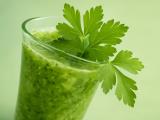Many would think that gladiators drew their strength from meat, eggs, and milk. However, science is increasingly doubtful about this. There is overwhelming evidence that the truth is quite different... And can be applied to modern times.
Gladiators – barley-eaters with plant-based power
Analysis of gladiator bones found in Ephesus (in present-day Turkey) showed increased levels of strontium, a mineral more typical of a plant-based diet. This contrasts with the bones of people who consumed more meat. Strontium binds to bone tissue, but accumulates less efficiently with a meat-based diet.
What is even more interesting is the confirmation from historical sources: the Roman historian Pliny the Elder referred to them as hordearii, which literally means barley-eaters. And it was not an insult – barley was a symbol of endurance, a stronger body, and hard work.
Why a plant-based diet for warriors?
It was not only economically sensible, as meat was expensive, but a plant-based diet was ideal for muscle regeneration, high in energy (carbohydrates), rich in fiber and minerals. Gladiators needed energy for long training sessions and quick wound healing.
It is also interesting that, as records and archaeological finds indicate, they drank a beverage made from ash, rich in calcium and magnesium, which was believed to strengthen bones – something modern athletes achieve with protein shakes and calcium supplements. In the ancient version, this could be called the protein smoothie of gladiators!
Parallel with modern athletes
Although it sounds like something from a National Geographic documentary, this is a serious insight into the power of a plant-based diet. Even today, many top athletes are transitioning to a vegetarian or vegan diet – like tennis player Novak Djokovic, ultramarathoner Scott Jurek, and Formula 1 driver Lewis Hamilton – all emphasizing that they achieved their greatest energy explosion and better recovery only with a plant-based diet.
There seems to be something to it...
Datum: 13. MAY 25 - GOOD TO KNOW
Were gladiators really vegetarians?
When we hear the word gladiator, we first imagine muscular men, soaked in sweat and holding sharp swords, a more detailed understanding of that time, surprises everyone ...
(FW)
 Would you like to be informed about news on the website?
Would you like to be informed about news on the website?
Just enter your e-mail
Gladiators vegetarian diet
Plant-based diet for warriors
Ancient athlete nutrition
Gladiators barley-eaters
Historical vegetarianism
|
Copyright (c) Foodwhisper.com March 2018 |
π | Contact: info@foodwhisper.com |
About us | Facebook |  |









